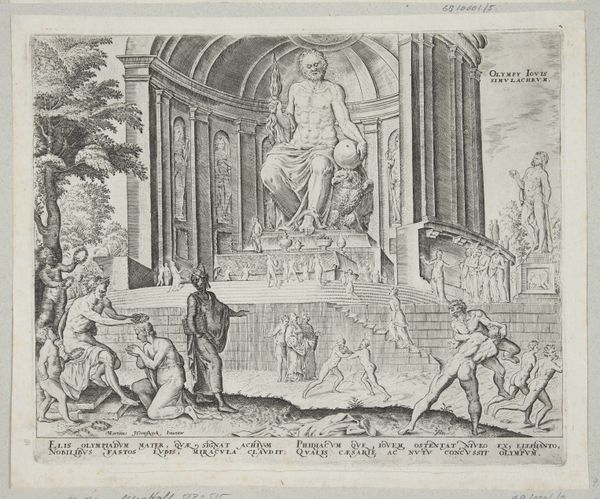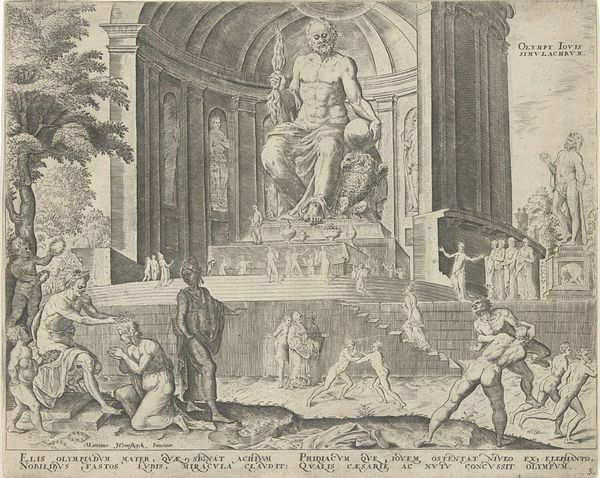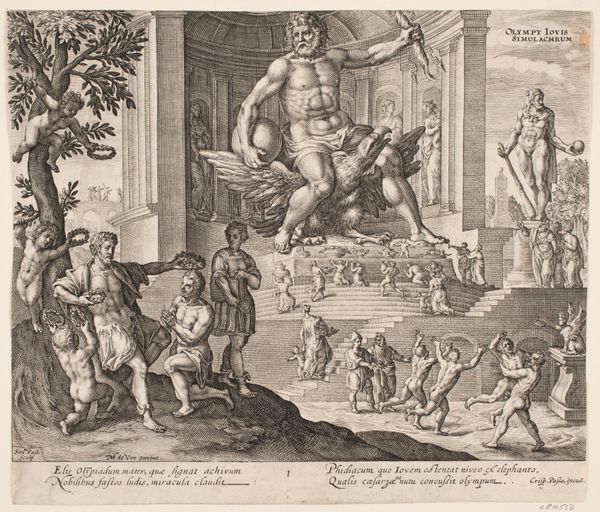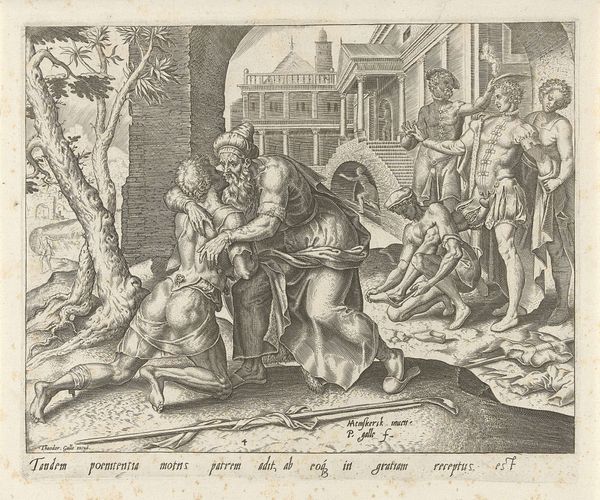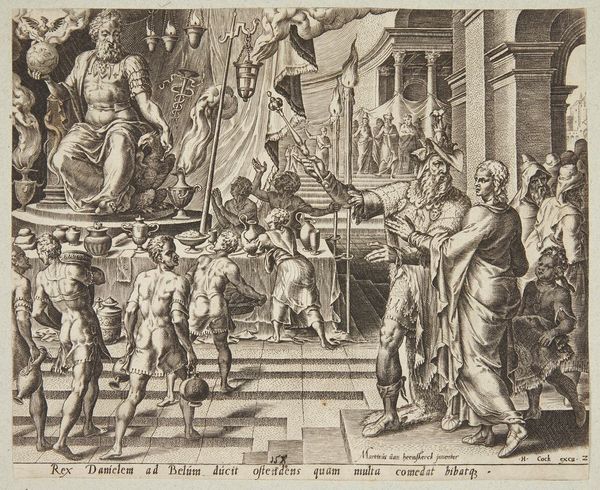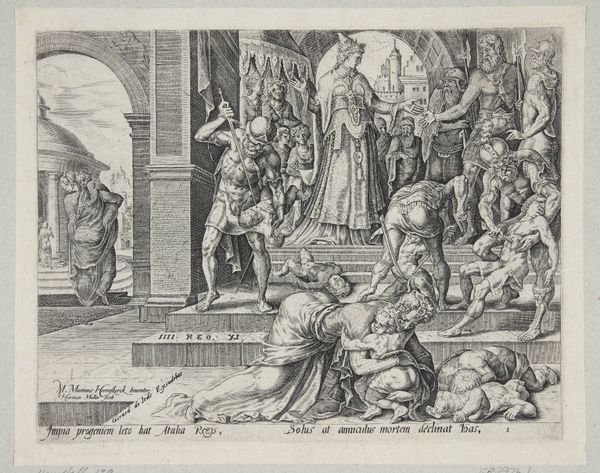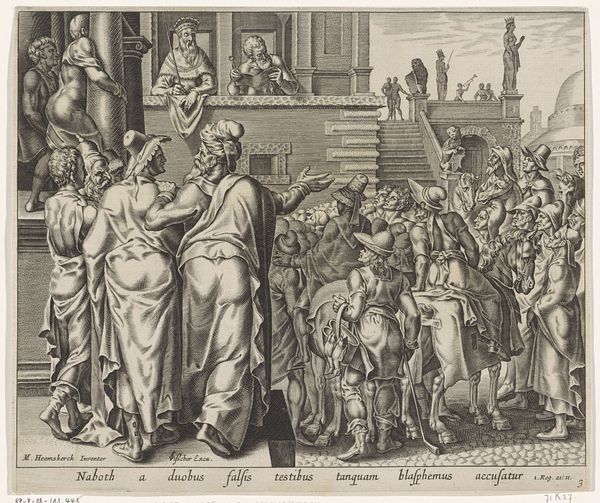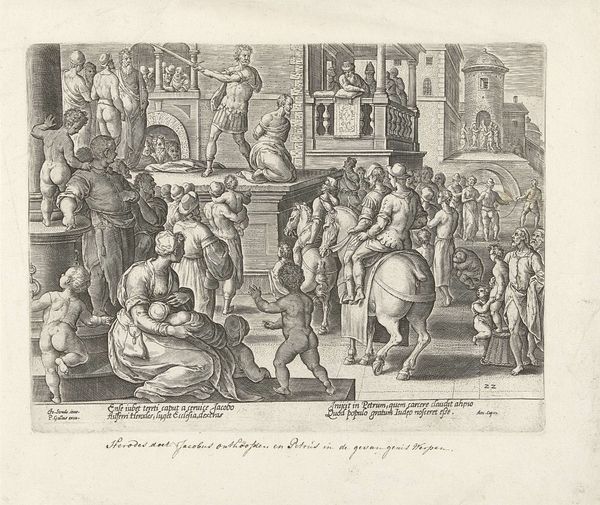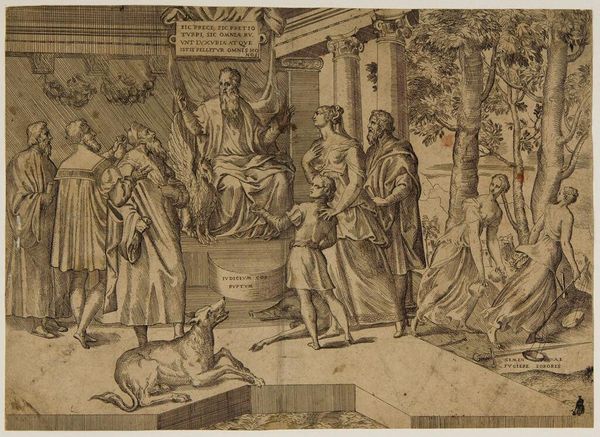
print, engraving
# print
#
pen illustration
#
pen sketch
#
old engraving style
#
classical-realism
#
figuration
#
11_renaissance
#
history-painting
#
engraving
Dimensions: height 212 mm, width 264 mm
Copyright: Rijks Museum: Open Domain
Philips Galle created this engraving of the Statue of Zeus at Olympia around 1600. The process of engraving, cutting lines into a metal plate to hold ink, allowed for mass production and dissemination of images. Note how the monumental scale of the statue is emphasized, showing the activity of the Olympic games taking place on the steps below. The Statue was made of ivory and gold, and it took the sculptor Phidias approximately twelve years to complete it. The labor-intensive nature of this process would have been considerable, requiring skilled craftsmanship and time, a stark contrast to today’s mass production methods. Consider the social context, as Galle made this engraving long after the statue’s destruction in the 5th century AD. He was working within a tradition of reproducing and disseminating classical knowledge, even if the works themselves had been destroyed. By focusing on the materials, the labor, and the historical context, we gain a deeper understanding of the Statue of Zeus and its cultural significance, challenging notions of fine art versus craft.
Comments
No comments
Be the first to comment and join the conversation on the ultimate creative platform.
